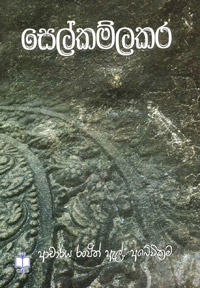Of rocks and stone monuments
 If a scholar is to go round the country observing the number of rock
edicts, rock inscriptions, moonstones, guard stones and other historic
monuments scattered, they would number into thousands. Over the years,
stone carving artistes have been engaged in making quite a number of
monuments inclusive of the much discussed moonstone or the
sandakadapahana, the semi-circular shaping stepping stone normally found
at the external doorstep of a holy place. If a scholar is to go round the country observing the number of rock
edicts, rock inscriptions, moonstones, guard stones and other historic
monuments scattered, they would number into thousands. Over the years,
stone carving artistes have been engaged in making quite a number of
monuments inclusive of the much discussed moonstone or the
sandakadapahana, the semi-circular shaping stepping stone normally found
at the external doorstep of a holy place.
Though a number of studies has been presented on the subjects, there
remains, it looks to enquire more into the subject with the acquisition
of knowledge in such subject areas as archeology, history anthropology,
symbolism, semiotics and semantics.
Dr Ranjit L Abeywickrama has found time from his profession as a
journalist to embark his attention on some of these areas. His range of
interest as a scholar cum journalist is wide. Over the years he has been
editing the Dinamina Vesak magazine to which he had contributed several
articles of interest on the subject cited earlier.
Splendid time
His preference had been the moonstone, for which diverse views had
been interpreted by such scholars as Professor Senarat Paranavitana,
Martin Wickramasinghe and a few others. Once I had the splendid time
with Paranavithana, who presented his interpretation of this moonstone,
not from a mere religious point of view but from an insightful
interpretation taking the oriental symbolism, which he denoted by the
term 'nimittikarna' instead of 'sanketha'.
 He drew the attention of the fellow scholars by stating that the
moonstone is not a mere stepping stone to a holy abode. Dr Abeywickrama,
while laying down the views of Prof Paranavithana, goes further away by
stating that the symbolic objects like lotus, horse, lion and flames of
fire are more than mere artistic presentation. He drew the attention of the fellow scholars by stating that the
moonstone is not a mere stepping stone to a holy abode. Dr Abeywickrama,
while laying down the views of Prof Paranavithana, goes further away by
stating that the symbolic objects like lotus, horse, lion and flames of
fire are more than mere artistic presentation.
According to Abeywickrama, the symbols represent the main teachings
of the Buddha, the Eight Noble Paths. Perhaps these have to be studied
by scholars who should apply collaborative evidence in acceptance.
Abeywickrama's is a brief account which presumably could be enlarged
through scholarly means.
Brief essays
The book in which the essay on the significance of the moonstone is
included with nine more brief essays titled as 'Selkamlakara'. The term
selkam lakara is an apt title for it denotes the rhetoric or the science
of sel or stone out of which marvels emerge.
The other essays revolve round such subjects as 'muragala' (guard
stone), karavaggala, vatadagey, vahlakada, gal vihara of Polonnaruwa,
Aukana Buddha statue, Bahirava, Kuttampokuna and Naga concept. Much
independent thought and vision has crept into the interpretation of each
of these topics, as they all centre round rock monuments of historic
significance.
Though quite a number of learned essays have appeared in the
so-called learned journals, they have failed to reach the more popular
reader of the country. This then is an attempt on the part of a Sinhala
journalist to introduce them to the wide readership. It is seen that Dr
Abeywickrama's way of writing is wide and ranges from profile studies to
studies in such areas as post modernism, about which he had already
written books, which we discussed in this column a few weeks ago. For
those schoolchildren who are interested in history and religions perhaps
this is a fitting tribute which may kindle the interest from the primary
stages. To his credit the compiler Abeywickrama has also laid down a
bibliography which may help the reader to scout more details on each of
the subject covered in the book.
Rediscovering history
An umber of photographs are also included which may supplement
additional interest on knowing more. The traditional way of teaching
history as a subject is changing. More and more students desire to learn
history as rediscovery, for which one has to pave the way in a
communicable manner. Same is seen in some other languages like archelogy
and anthropology.
Though the collection of essays by Abeywickrama are written in a
lighter vein, they envelop nevertheless a vast spectrum of subject,
triggering off from literary sources to controversies. The time is ripe
for scholars to rediscover their subject areas in order to create a
better climate of readership.
[email protected]
|





